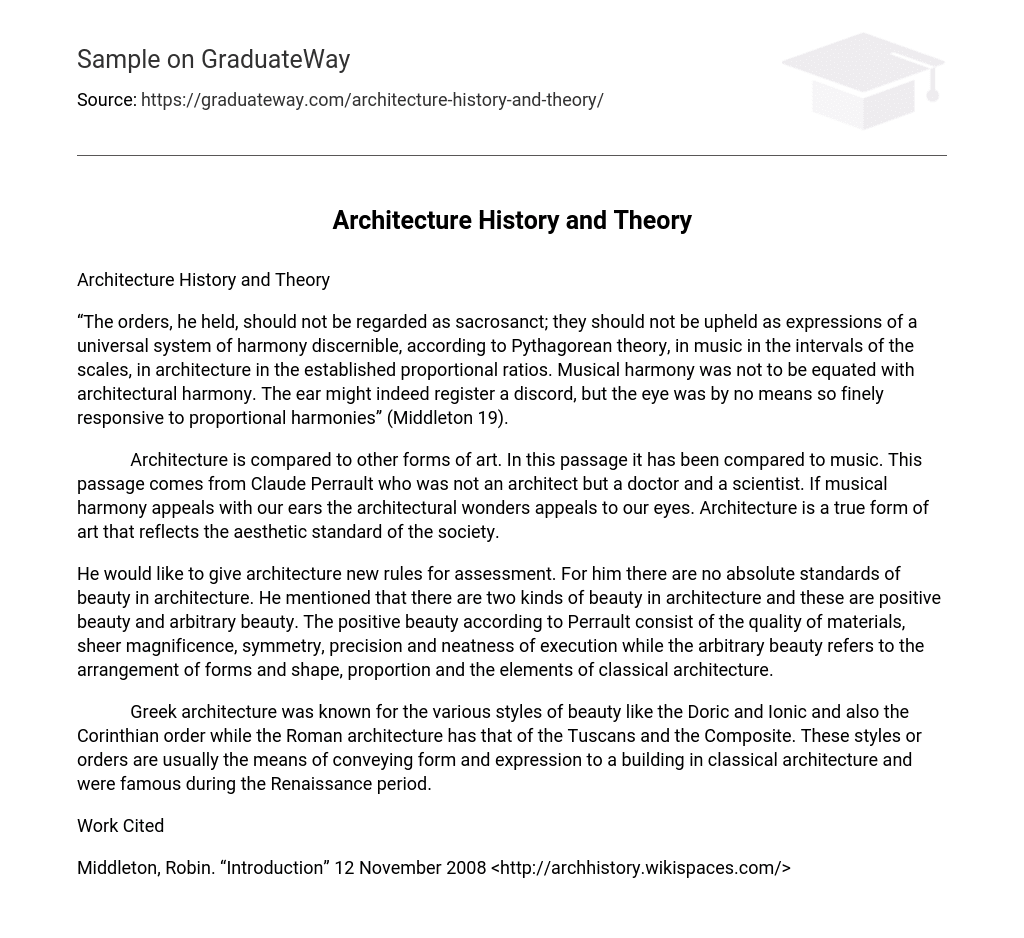“The orders, he held, should not be regarded as sacrosanct; they should not be upheld as expressions of a universal system of harmony discernible, according to Pythagorean theory, in music in the intervals of the scales, in architecture in the established proportional ratios. Musical harmony was not to be equated with architectural harmony. The ear might indeed register a discord, but the eye was by no means so finely responsive to proportional harmonies” (Middleton 19).
Architecture is compared to other forms of art. In this passage it has been compared to music. This passage comes from Claude Perrault who was not an architect but a doctor and a scientist. If musical harmony appeals with our ears the architectural wonders appeals to our eyes. Architecture is a true form of art that reflects the aesthetic standard of the society.
He would like to give architecture new rules for assessment. For him there are no absolute standards of beauty in architecture. He mentioned that there are two kinds of beauty in architecture and these are positive beauty and arbitrary beauty. The positive beauty according to Perrault consist of the quality of materials, sheer magnificence, symmetry, precision and neatness of execution while the arbitrary beauty refers to the arrangement of forms and shape, proportion and the elements of classical architecture.
Greek architecture was known for the various styles of beauty like the Doric and Ionic and also the Corinthian order while the Roman architecture has that of the Tuscans and the Composite. These styles or orders are usually the means of conveying form and expression to a building in classical architecture and were famous during the Renaissance period.
Work Cited
Middleton, Robin. “Introduction” 12 November 2008 <http://archhistory.wikispaces.com/>





